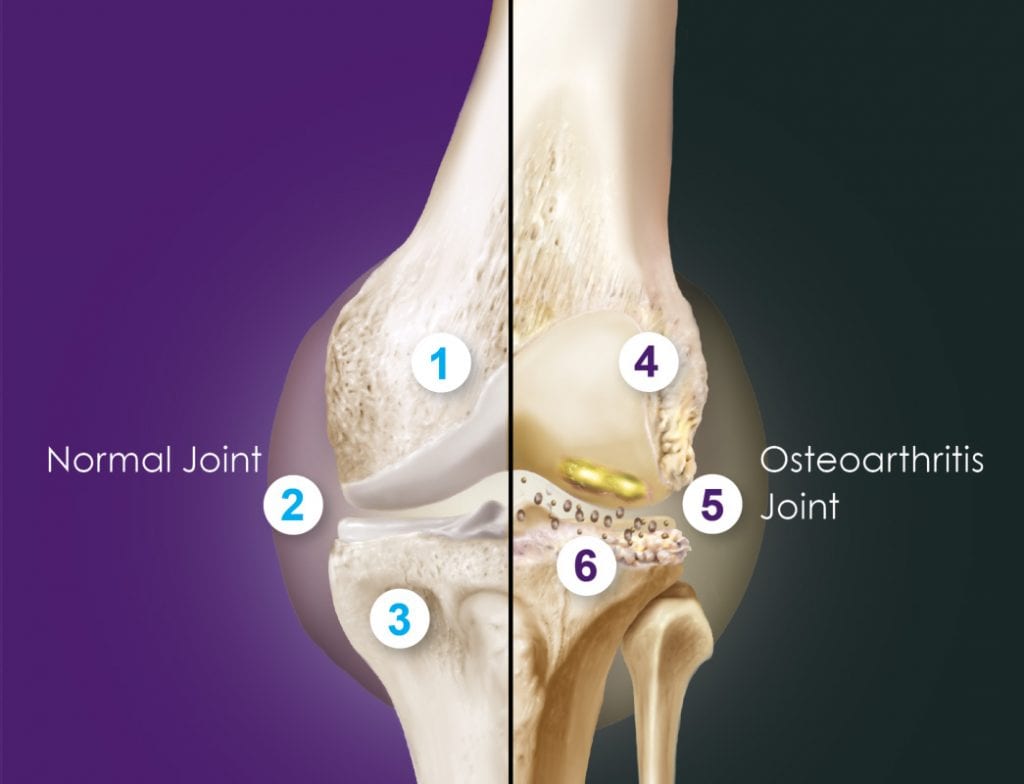This website uses cookies so that we can provide you with the best user experience possible. Cookie information is stored in your browser and performs functions such as recognising you when you return to our website and helping our team to understand which sections of the website you find most interesting and useful.
Osteoarthritis is a chronic condition and the most common cause of disability in adults.23
According to the Arthritis Foundation, 1 out of 2 adults will develop knee osteoarthritis in their lifetime.23
When osteoarthritis affects the knee, the joint cartilage begins to break down and the natural hyaluronic acid in the surrounding fluid becomes thinner and less functional.18 This triggers inflammation and damage that causes pain and stiffness when you move your knee.5,11,24
Though no treatment can completely stop osteoarthritis progression, it is possible to significantly slow down joint damage and keep knee joints stronger and flexible longer.12,25

Inside an osteoarthritis joint
- Normal cartilage: Provides a smooth surface, allowing bones to move easily across each other.
- Synovial fluid: Lubricates and provides shock absorption during activity because of a high concentration of hyaluronic acid.
- Normal bone: Provides strength and support for the body’s tissues and organs.
- Eroded cartilage: If completely worn away, bones may painfully scrape against each other.
- Osteoarthritis synovial fluid: Degeneration from osteoarthritis leads to lower production of hyaluronic acid and poorer quality.
- Osteoarthritis bone: Osteophytes: bony spur growths.
Learn more about the causes of osteoarthritis, the symptoms, and diagnosis.


